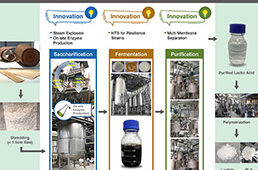 Recently, a triboelectric nanogenerator (TENG), based on the universally known contact electrification effect, has been proven to be a cost-effective and robust approach for harvesting ambient environmental energy. A periodic contact and separation between two materials with different charge affinities acts as a charge-pump to alternately drive induced electrons to flow between the electrodes through an external load. A key challenge to TENG is its relatively low output current.
Recently, a triboelectric nanogenerator (TENG), based on the universally known contact electrification effect, has been proven to be a cost-effective and robust approach for harvesting ambient environmental energy. A periodic contact and separation between two materials with different charge affinities acts as a charge-pump to alternately drive induced electrons to flow between the electrodes through an external load. A key challenge to TENG is its relatively low output current.
Reporting their findings in the November 1, 2013 online edition of ACS Nano, researchers now have demonstrated a novel integrated rhombic gridding based triboelectric nanogenerator (TENG).
Relying on the TENG, a self-powered backpack was developed with a vibration-to-electric energy conversion efficiency up to 10.62 (±1.19)%. When a person walks naturally carrying the designed backpack with a total weight of 2.0 kg, the power harvested from the body vibration is high enough to simultaneously light 40 LEDs.
The team, led by Zhong Lin Wang from Georgia Institute of Technology, says that the newly designed TENG provides an innovative approach to effectively enhance the device current output and thus it is capable of harvesting vibration energy from natural human walking, which can have a range of applications for extending the lifetime of a battery as well as the possibility of replacing a battery for building self-powered systems.
Harvesting Energy from the Natural Vibration of Human Walking
Source: American Chemical Society




